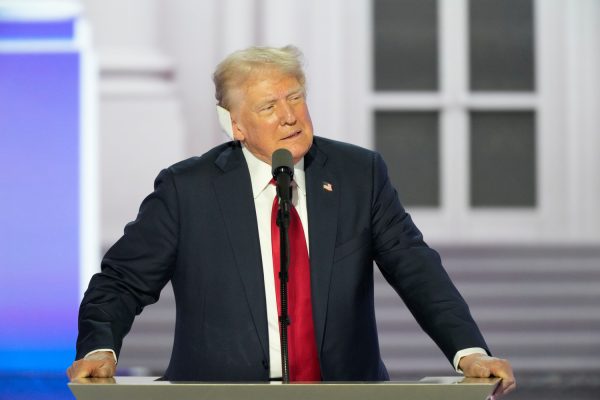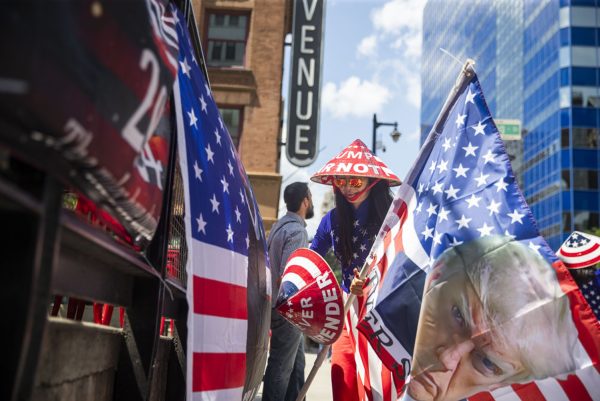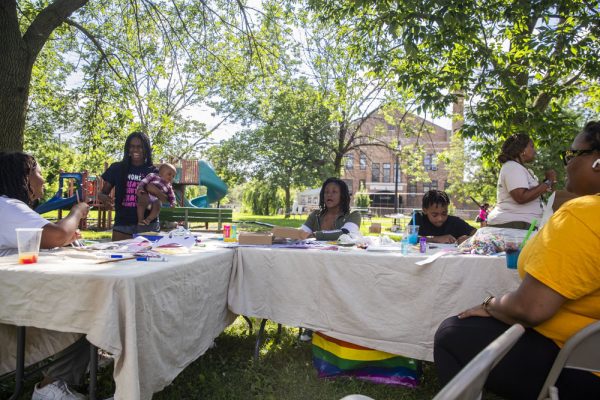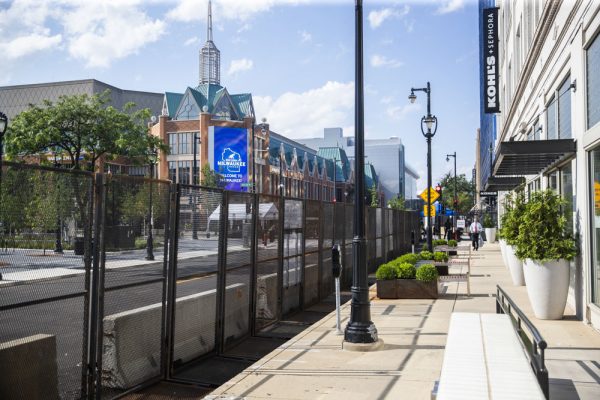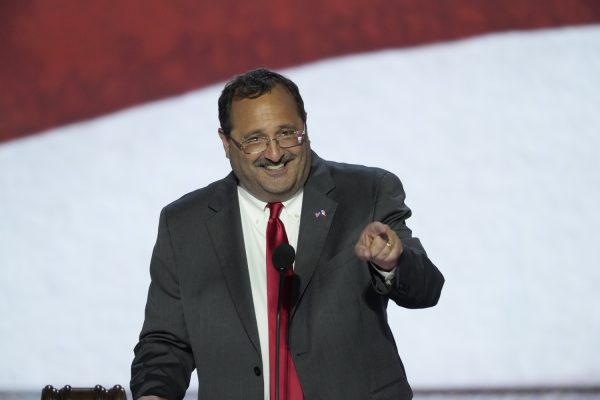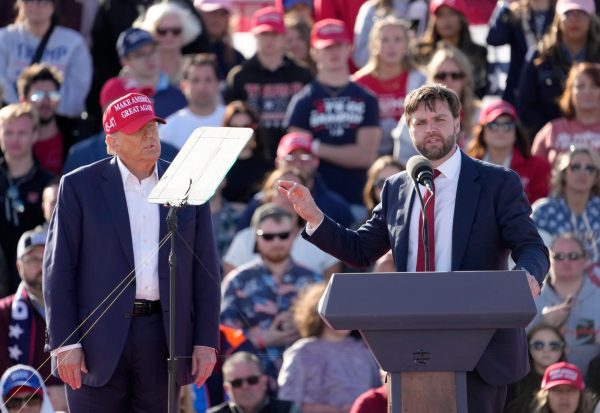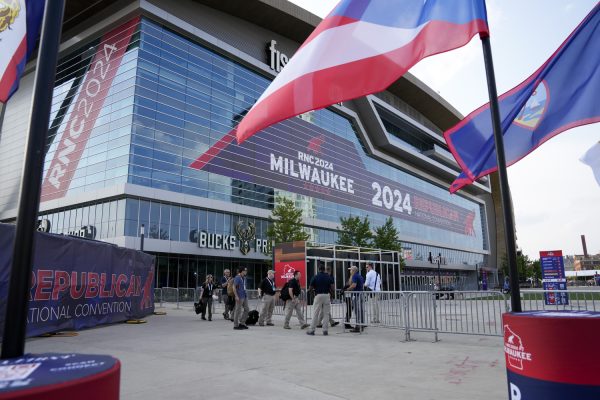Iowa sees record-breaking turnout results for 2020 with more than 1.6 million Iowans voting
72.15 percent of registered voters turned out for the election, surpassing the record set in 2012.
As seen on Nov. 3, 2020. Wilton Community Center 1215 Cypress St.
November 4, 2020
Iowans made history as the state saw record-breaking turnout results for the 2020 general election, driven by scores of early voters.
As of 11:30 p.m. Tuesday, 1,618,956 Iowans turned out for the election, which is 72.15 percent of registered Iowa voters.
Ballots cast in 2020 surpassed past presidential elections in the Hawkeye State, breaking the 2012 record of 1,589,951 when Barack Obama ran for reelection. The previous record for Iowa voters during a general election.
Four years ago, 1.57 million voters cast their ballots for the contest between now-President Trump and Hillary Clinton. Nearly 650,000 of those voted absentee, as previously reported by The Daily Iowan.
The state broke another voting record days before the election — reaching more than 2 million active registered voters throughout Iowa.
Of the 2,243,758 registered voters in Iowa, Iowa Secretary of State Paul Pate announced on Nov. 2 that Iowa had reached 2,095,581 active registered voters in the state, about 50,000 higher than the previous mark.
From the registered voters as of the day before Election Day, 34.3 percent registered as Republican, 33.3 percent as Democrat, 31.4 percent no party, and 0.8 percent registered other.
Communications Director for the Iowa Secretary of State Office Kevin Hall said Iowa had shattered all records in terms of absentee voting.
“It shatters the old record by almost 300,000,” Hall said. “A lot of this is due to the pandemic and the statewide mailings in our office.”
Hall said after the primary election in June, Pate sent absentee ballot forms out to all active registered voters at the time, and provided them again before Election Day. This contributed to the record breaking number of total voter turnout.
“Because of the COVID-19 concerns, we wanted to make sure everybody had that opportunity that was easily accessible to let them vote,” Hall said. “Iowans have options, they can vote by mail, they can vote early in person, or they can vote at the polls on Election Day.”
Hall added that the Secretary of State office worked with all 99 counties to ensure a smooth process, providing gloves, masks, hand sanitizer, and social distancing markers to make sure voters and volunteers felt safe.
According to absentee data from the Secretary of State office, 955,971 Iowans voted early for the 2020 election as of Election Day.
Election officials encouraged by-mail and early voting as alternatives to voting on Election Day to reduce crowding at polling locations during the pandemic.
Because of the influx of early voting this year, the Iowa Legislative Council approved a provision that allowed county election officials to process ballots in the days before Election Day. This new provision, requested by Pate, sped up the vote-counting process.
Across the state, election offices counted ballots until 10 p.m. on Tuesday, per a provision in Iowa Code according to Iowa House 53.23. Ballots that were postmarked by Monday still have until Nov. 9 to reach a county auditor’s office.
Hall said the Secretary of State’s Office considers mail-in voting and voting early as absentee voting, and that Iowans were turning out for the election in greater numbers than previous years.
“A lot of people are engaged,” he said. “There is a lot going on in our country, obviously including COVID-19. Some people maybe not living through their normal routine are more tuned in than normally, so it seems like there is an increased interest this year.”
Return rates of absentee ballots in 2020 broke the record from previous election years, with a return rate of 94.6 percent. In 2016, the return rate for absentee ballots was 94.3 percent and 92.9 percent in 2012.
At midnight, the 3rd Congressional District saw the highest turnout, with 447,416 voters turning out for the election.
Of the 518,441 active registered voters in the 2nd Congressional District, which includes Johnson and Linn Counties, auditors have received 250,835 absentee ballots as of Election Day.
Johnson County, home to the University of Iowa, broke an all-time turnout record. 84,108 people voted out of 97,739 registered voters, resulting in a 86.05 percent turnout rate, with 60,844 voting early and absentee.
Johnson County Auditor Travis Weipert said results will remain unofficial until the canvas on Nov. 9, when the auditor’s office discusses the results in front of the Johnson County Board of Supervisors.
He said that Johnson County is different from any other county in Iowa because it’s home to the university.
“The majority of voters are in tune with what is going on, highly educated or educated, because we have a different clientele,” Weipert said. “So of course, we cater to that clientele. So I think that’s also why we have a higher voter turnout, or people voting early. We work, we work to make sure it is easy and accessible for the Johnson County citizens.”
Weipert said as of Tuesday night, 36,400 ballots came in through the mail. Going into Election Day, he said there were 5,000 mail-in ballots outstanding, and he is expecting less than that to come in before the cutoff on Nov. 9.
He added that it is hard to interpret why turnout in Johnson County has been high, as it has been on an upward trend since last year, with 77,000 people in the county voting in 2016.
“Each election is so different, it’s hard to gauge,” he said. “My hope is that it isn’t that we just have a bunch of new people moving into the county, it’s that the residents are being more engaged in the political process.”
Anna Harms, 19, Iowa City, University of Iowa first-year student, said she felt it was important to turn out for the election because she is uncomfortable with the current living circumstances.
“I think they [the living circumstances] need to be revised, and the only way we can do that is to go out and vote and show that we all have a voice,” Harms said. “Turnout is important because we live in a democracy. That’s freedom for whoever wants to speak, so use it.”
For Harms’ first presidential election, she said she wanted to vote in person on Election Day.
“It feels more official,” Harms said. “I’m going, I’m talking to people, saying ‘this is how I believe.’ This is on paper, this is real. There are so many people who are making claims on social media saying they’re for something, and it’s really easy to say that, but when it comes to actually showing up and making a change, that’s what’s really important.”
In 2016, 35,681 people voted on Election Day in Johnson County, not including those who voted absentee. 41,795 people voted absentee in 2016, and total voter turnout was at 69.62 percent.
“There’s competitive races on the ballot, and obviously people care deeply about them,” Hall said. “They want to make their voices heard.”








